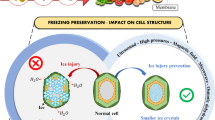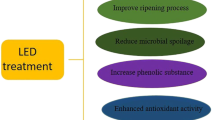Abstract
Like classic wood preservatives, many water repellents have the drawback of being detrimental to the environment. Hence interest in environment-friendly, even biodegradable, substances has increased. Natural oils (e.g. tall oil, linseed oil) appear to be capable of preventing water uptake by wood. However, in order to achieve total sapwood penetration, the amount of oil needed is high. The aim of this study was to investigate the water repellent efficiency of crude tall oil and crude tall oil water emulsions (oil-in-water and water-in-oil emulsions), and the possibilities of reducing the amount of oil needed with the emulsion technique. Scots pine sapwood samples were impregnated with tall oil formulations. The levels of water absorption and the degree of water repellent efficiency were determined with cyclical wetting and drying tests. The results showed that tall oil treatments reduce the water uptake of pine sapwood. With tall oil emulsion treatments almost equal water repellent efficiencies were reached as with pure tall oil, even when the oil retentions were considerably lower. The total amount of oil required could be halved. The emulsion technique is a potential method of decreasing the amount of oil needed in order to protect wood from water uptake.
Zusammenfassung
Wie viele klassische Holzschutzmittel haben auch viele Hydrophobierungsmittel den Nachteil, dass sie umweltschädlich sind. Deshalb ist das Interesse an umweltfreundlichen, insbesondere biologisch abbaubaren, Mitteln gestiegen. Natürliche Öle (wie z.B. Tallöl, Leinöl) haben grundsätzlich eine hydrophobierende Wirkung. Um jedoch eine vollständige Imprägnierung des Splintholzes zu erreichen, ist eine grosse Ölmenge erforderlich. Ziel dieser Arbeit war es, die hydrophobierende Wirkung von Tallöl sowie von Tallöl-Wasseremulsionen (Öl-in-Wasser- und Wasser-in-Öl-Emulsionen) zu untersuchen sowie festzustellen, in welchem Umfang die benötigte Ölmenge durch das Emulgieren reduziert werden kann. Kiefernsplintholzproben wurden mit Tallölgemischen imprägniert. Der Grad der Wasseraufnahme und der Hydrophobierungsgrad wurden mittels zyklischer Befeuchtungs- und Trocknungsversuche bestimmt. Die Ergebnisse zeigten, dass eine Behandlung mit Tallöl die Wasseraufnahme von Kiefernsplintholz reduziert. Behandlungen mit Tallölemulsionen erbrachten annähernd die gleiche Wasser abweisende Wirkung wie solche mit reinem Tallöl, obwohl dabei die eingebrachte Ölmenge deutlich niedriger war. Die erforderliche Ölmenge konnte auf die Hälfte reduziert werden. Die Emulsionstechnik ist eine potenzielle Methode um die Ölmenge, die zum Feuchteschutz von Holz benötigt wird, zu reduzieren.
Similar content being viewed by others
References
Anonymous (1999a) Wood Handbook – Wood as an Engineering Material. Forest Products Laboratory. Gen Tech Rep FPL-GTR-113. Madison, WI, US Department of Agriculture, Forest Service, Forest Products Laboratory (online), available from: http://www.fpl.fs.fed.us/ (cited 29th September 2003)
Anonymous (1999b) Natural Resin report. Natural resins as a potential wood protecting agent. Project FAIR-CT95-0089
Banks WB, Voulgaridis E (1980) The performance of water repellents in the control of moisture absorption by wood exposed to the weather. In: BWPA Annual Convention, pp 43–53
Borgin K (1961) The effect of water repellents on the dimensional stability of wood. Norsk Skogind 15(11):507–521
Borgin K, Corbett K (1970a) The stability and weathering properties of wood treated with various oils. Plast Paint Rubber 14(3):69–72
Borgin K, Corbett K (1970b) The stability and weathering properties of wood treated with various resins. Plast Paint Rubber 14(5):61–66
EN 335-1/2/3. Durability of wood and wood-based products. Definition of hazard classes of biological attack. Part 1: General, Part 2: Guide to the application of hazard classed to solid wood, Part 3: Application to wood-based panels
Feist WC, Mraz EA (1978) Protecting millwork with water repellents. Forest Prod J 28(5):31–35
Jermer J, Bergman Ö, Nilsson T (1993) Fungus cellar and field tests with tall oil derivatives. Final report after 11 years’ testing. The international research group on wood preservation, document no. IRG/WP 93-30007. Stockholm, 7 pages
Miniutti VP, Mraz EA, Black JM (1961) Measuring the effectiveness of water-repellent preservatives. Forest Prod J 11(10):453–462
Paajanen L, Ritschkoff A-C (2002) Effect of crude tall oil, linseed oil and rapeseed oil on the growth of the decay fungi. The International Research Group on Wood Preservation, IRG/WP 02-30299, 6 pages
Paajanen L, Koskela K, Viitaniemi P (1999) Treatment of wood with a mixture of tall oil and maleic anhydride. Espoo, Technical Research Centre of Finland, VTT Julkaisuja – 836, 75 pages. In Finnish
Passialis CN, Voulgaridis EV (1999) Water repellent efficiency of organic solvent extractives from Aleppo pine leaves and bark applied to wood. Holzforschung 53(2):151–155
Porter NA, Wujek DG (1984) Autoxidation of polyunsaturated fatty acids, an expanded mechanistic study. J Am Chem Soc 106(9):2626–2629
Porter NA, Lehman LS, Weber BA, Smith KJ (1981) Unified mechanism for polyunsaturated fatty acids autoxidation. Competition of peroxy radical hydrogen atom abstraction, β-scission, and cyclization. J Am Chem Soc 103(21):6447–6455
Rapp AO, Peek R-D (1995) New principles for the protection of wood: Impregnation with water borne resins. The International Research Group on Wood Preservation, IRG/WP 95-40047, 9 pages
Razzaque MA (1982) The effect of concentration and distribution on the performance of water repellents applied to wood. University of Wales, Ph.D. Thesis
Ritschkoff A-C, Rättö M, Nurmi A, Kokko H, Rapp A, Militz H (1999) Effect of some resin treatments on fungal degradation reactions. The International Research Group on Wood Preservation, IRG/WP 99-10318, 8 pages
Rowell RM, Banks WB (1985) Water repellency and dimensional stability of wood. Gen Tech Rep FPL-50. Madison, WI, US Department of Agriculture, Forest Service, Forest Products Laboratory, 24 pages
Sailer M, Rapp AO (2001) Use of vegetable oils for wood protection. In: COST Action E22: Environmental optimisation of wood protection. Conference in Reinbek, Germany, 8–10 November 2001
Sailer M, Rapp AO, Leithoff H (2000) Improved resistance of Scots pine and spruce by application of an oil-heat treatment. The international research group on wood preservation. Document no. IRG/WP 00-40162. Stockholm, 17 pages
Sailer M, Rapp AO, Peek R-D (1998) Biological resistance of wood treated with waterbased resins and drying oils in a mini-block test. The international research group on wood preservation, document no. IRG/WP 98-40107. Stockholm
Stamm AJ (1964) Wood and cellulose science. Ronald Press, New York, 549 pages
Van Acker J, Stevens M (2000) Increased biological durability differs for traditional wood preservation and new non-biocidal systems (NBS). The International Research Group on Wood Preservation, IRG/WP 00-20212, 11 pages
Van Acker J, Nurmi A, Gray S, Militz H, Hill C, Kokko H, Rapp A (1999) Decay resistance of resin treated wood. The International Research Group on Wood Preservation, IRG/WP 99-30206, 16 pages
Van Eckeveld A (2001) Natural oils as water repellents for Scots pine. Wageningen University, Thesis AV 2001-15, 30 pages
Van Eckeveld A, Homan WJ, Militz H (2001a) Water repellency of some natural oils. In: COST Action E22: Environmental optimisation of wood protection. Conference in Reinbek, Germany, 8–10 November 2001
Van Eckeveld A, Homan WJ, Militz H (2001b) Increasing the water repellency of Scots pine sapwood by impregnation with undiluted linseed oil, wood oil, coccos oil, tall oil. Holzforsch Holzverw 6:113–115
Var AA, Öktem E (1999) Reduction by natural resin of water uptake in various wood species. Tr J Agr Forest 23:413–418
Voulgaridis EV (1993) Oleoresin and gum rosin from Pinus halepensis Mill. as basic constituents in water repellent formulation applied to wood. Holz Roh- Werkst 51:324–328
Voulgaridis EV (2001) Natural oils, resins and extractives from Aleppo pine and other conifers or hardwoods as potential wood protecting or bonding agents. In: COST Action E22: Environmental optimisation of wood protection. Conference in Reinbek, Germany, 8–10 November 2001
Voulgaridis EV, Banks WB (1983) Laboratory evaluation of the performance of water repellents applied to long wood specimens. Holzforschung 37(5):261–266
Voulgaridis EV, Passialis CN (1999) Natural resins and extractives as protective agents of wood against water uptake. In: COST Action E2: Wood durability. Final Conference: “Advances in wood preservation in Europe” 25–27 January 1999, Switzerland
Author information
Authors and Affiliations
Corresponding author
Rights and permissions
About this article
Cite this article
Hyvönen, A., Piltonen, P. & Niinimäki, J. Tall oil/water – emulsions as water repellents for Scots pine sapwood. Holz Roh Werkst 64, 68–73 (2006). https://doi.org/10.1007/s00107-005-0040-5
Published:
Issue Date:
DOI: https://doi.org/10.1007/s00107-005-0040-5




